| Weight | 1 lbs |
|---|---|
| Dimensions | 9 × 5 × 2 in |
| host | rabbit |
| isotype | IgG |
| clonality | polyclonal |
| concentration | 1 mg/mL |
| applications | ICC/IF, WB |
| reactivity | NAK/TBK1 (CT) |
| available sizes | 100 µg |
rabbit anti-NAK/TBK1 (CT) polyclonal antibody 4716
$445.00
Antibody summary
- Rabbit polyclonal to NAK/TBK1 (CT)
- Suitable for: ELISA,WB,ICC
- Isotype: Whole IgG
- 100 µg
rabbit anti-NAK/TBK1 (CT) polyclonal antibody 4716
| antibody |
|---|
| Tested applications WB,ICC/IF,ELISA |
| Recommended dilutions Immunoblotting: use at 0.5-1 ug/mL. In immunoblots, a band of 84 kD is detected. Positive control: MOLT4 cell lysate. |
| Immunogen Peptide corresponding to aa 712-727 of human NAK/TBK1. This sequence is identical to that of mouse NAK/TBK1. |
| Size and concentration 100µg and lot specific |
| Form liquid |
| Storage Instructions This antibody is stable for at least one (1) year at -20°C. Avoid multiple freeze- thaw cycles. |
| Storage buffer PBS, pH 7.4. |
| Purity peptide affinity purification |
| Clonality polyclonal |
| Isotype IgG |
| Compatible secondaries goat anti-rabbit IgG, H&L chain specific, peroxidase conjugated, conjugated polyclonal antibody 9512 goat anti-rabbit IgG, H&L chain specific, biotin conjugated polyclonal antibody 2079 goat anti-rabbit IgG, H&L chain specific, FITC conjugated polyclonal antibody 7863 goat anti-rabbit IgG, H&L chain specific, Cross Absorbed polyclonal antibody 2371 goat anti-rabbit IgG, H&L chain specific, biotin conjugated polyclonal antibody, crossabsorbed 1715 goat anti-rabbit IgG, H&L chain specific, FITC conjugated polyclonal antibody, crossabsorbed 1720 |
| Isotype control Rabbit polyclonal - Isotype Control |
| target relevance |
|---|
| Protein names Serine/threonine-protein kinase TBK1 (EC 2.7.11.1) (NF-kappa-B-activating kinase) (T2K) (TANK-binding kinase 1) |
| Gene names TBK1,TBK1 NAK |
| Protein family Protein kinase superfamily, Ser/Thr protein kinase family, I-kappa-B kinase subfamily |
| Mass 83642Da |
| Function FUNCTION: Serine/threonine kinase that plays an essential role in regulating inflammatory responses to foreign agents (PubMed:10581243, PubMed:11839743, PubMed:12692549, PubMed:12702806, PubMed:14703513, PubMed:15367631, PubMed:15485837, PubMed:18583960, PubMed:21138416, PubMed:23453971, PubMed:23453972, PubMed:23746807, PubMed:25636800, PubMed:26611359, PubMed:32404352, PubMed:34363755, PubMed:32298923). Following activation of toll-like receptors by viral or bacterial components, associates with TRAF3 and TANK and phosphorylates interferon regulatory factors (IRFs) IRF3 and IRF7 as well as DDX3X (PubMed:12692549, PubMed:12702806, PubMed:14703513, PubMed:15367631, PubMed:18583960, PubMed:25636800). This activity allows subsequent homodimerization and nuclear translocation of the IRFs leading to transcriptional activation of pro-inflammatory and antiviral genes including IFNA and IFNB (PubMed:12702806, PubMed:15367631, PubMed:25636800, PubMed:32972995). In order to establish such an antiviral state, TBK1 form several different complexes whose composition depends on the type of cell and cellular stimuli (PubMed:23453971, PubMed:23453972, PubMed:23746807). Plays a key role in IRF3 activation: acts by first phosphorylating innate adapter proteins MAVS, STING1 and TICAM1 on their pLxIS motif, leading to recruitment of IRF3, thereby licensing IRF3 for phosphorylation by TBK1 (PubMed:25636800, PubMed:30842653, PubMed:37926288). Phosphorylated IRF3 dissociates from the adapter proteins, dimerizes, and then enters the nucleus to induce expression of interferons (PubMed:25636800). Thus, several scaffolding molecules including FADD, TRADD, MAVS, AZI2, TANK or TBKBP1/SINTBAD can be recruited to the TBK1-containing-complexes (PubMed:21931631). Under particular conditions, functions as a NF-kappa-B effector by phosphorylating NF-kappa-B inhibitor alpha/NFKBIA, IKBKB or RELA to translocate NF-Kappa-B to the nucleus (PubMed:10783893, PubMed:15489227). Restricts bacterial proliferation by phosphorylating the autophagy receptor OPTN/Optineurin on 'Ser-177', thus enhancing LC3 binding affinity and antibacterial autophagy (PubMed:21617041). Phosphorylates SMCR8 component of the C9orf72-SMCR8 complex, promoting autophagosome maturation (PubMed:27103069). Phosphorylates ATG8 proteins MAP1LC3C and GABARAPL2, thereby preventing their delipidation and premature removal from nascent autophagosomes (PubMed:31709703). Seems to play a role in energy balance regulation by sustaining a state of chronic, low-grade inflammation in obesity, which leads to a negative impact on insulin sensitivity (By similarity). Attenuates retroviral budding by phosphorylating the endosomal sorting complex required for transport-I (ESCRT-I) subunit VPS37C (PubMed:21270402). Phosphorylates Borna disease virus (BDV) P protein (PubMed:16155125). Plays an essential role in the TLR3- and IFN-dependent control of herpes virus HSV-1 and HSV-2 infections in the central nervous system (PubMed:22851595). Acts both as a positive and negative regulator of the mTORC1 complex, depending on the context: activates mTORC1 in response to growth factors by catalyzing phosphorylation of MTOR, while it limits the mTORC1 complex by promoting phosphorylation of RPTOR (PubMed:29150432, PubMed:31530866). Acts as a positive regulator of the mTORC2 complex by mediating phosphorylation of MTOR, leading to increased phosphorylation and activation of AKT1 (By similarity). Phosphorylates and activates AKT1 (PubMed:21464307). Involved in the regulation of TNF-induced RIPK1-mediated cell death, probably acting via CYLD phosphorylation that in turn controls RIPK1 ubiquitination status (PubMed:34363755). Also participates in the differentiation of T follicular regulatory cells together with the receptor ICOS (PubMed:27135603). {ECO:0000250|UniProtKB:Q9WUN2, ECO:0000269|PubMed:10581243, ECO:0000269|PubMed:10783893, ECO:0000269|PubMed:11839743, ECO:0000269|PubMed:12692549, ECO:0000269|PubMed:12702806, ECO:0000269|PubMed:14703513, ECO:0000269|PubMed:15367631, ECO:0000269|PubMed:15485837, ECO:0000269|PubMed:15489227, ECO:0000269|PubMed:16155125, ECO:0000269|PubMed:18583960, ECO:0000269|PubMed:21138416, ECO:0000269|PubMed:21270402, ECO:0000269|PubMed:21464307, ECO:0000269|PubMed:21617041, ECO:0000269|PubMed:21931631, ECO:0000269|PubMed:22851595, ECO:0000269|PubMed:23453971, ECO:0000269|PubMed:23453972, ECO:0000269|PubMed:23746807, ECO:0000269|PubMed:25636800, ECO:0000269|PubMed:26611359, ECO:0000269|PubMed:27103069, ECO:0000269|PubMed:27135603, ECO:0000269|PubMed:29150432, ECO:0000269|PubMed:30842653, ECO:0000269|PubMed:31530866, ECO:0000269|PubMed:31709703, ECO:0000269|PubMed:32298923, ECO:0000269|PubMed:32972995, ECO:0000269|PubMed:34363755, ECO:0000269|PubMed:37926288}. |
| Catalytic activity CATALYTIC ACTIVITY: Reaction=L-seryl-[protein] + ATP = O-phospho-L-seryl-[protein] + ADP + H(+); Xref=Rhea:RHEA:17989, Rhea:RHEA-COMP:9863, Rhea:RHEA-COMP:11604, ChEBI:CHEBI:15378, ChEBI:CHEBI:29999, ChEBI:CHEBI:30616, ChEBI:CHEBI:83421, ChEBI:CHEBI:456216; EC=2.7.11.1; Evidence={ECO:0000269|PubMed:10783893, ECO:0000269|PubMed:14703513, ECO:0000269|PubMed:15367631, ECO:0000269|PubMed:18583960, ECO:0000269|PubMed:21138416, ECO:0000269|PubMed:21270402, ECO:0000269|PubMed:21464307, ECO:0000269|PubMed:21617041, ECO:0000269|PubMed:25636800, ECO:0000269|PubMed:29150432, ECO:0000269|PubMed:31530866, ECO:0000269|PubMed:31709703}; CATALYTIC ACTIVITY: Reaction=L-threonyl-[protein] + ATP = O-phospho-L-threonyl-[protein] + ADP + H(+); Xref=Rhea:RHEA:46608, Rhea:RHEA-COMP:11060, Rhea:RHEA-COMP:11605, ChEBI:CHEBI:15378, ChEBI:CHEBI:30013, ChEBI:CHEBI:30616, ChEBI:CHEBI:61977, ChEBI:CHEBI:456216; EC=2.7.11.1; Evidence={ECO:0000269|PubMed:10783893, ECO:0000269|PubMed:14703513, ECO:0000269|PubMed:15367631, ECO:0000269|PubMed:18583960, ECO:0000269|PubMed:21138416, ECO:0000269|PubMed:21270402, ECO:0000269|PubMed:21464307, ECO:0000269|PubMed:21617041, ECO:0000269|PubMed:25636800}; |
| Subellular location SUBCELLULAR LOCATION: Cytoplasm {ECO:0000269|PubMed:15485837, ECO:0000269|PubMed:21813773, ECO:0000269|PubMed:29251827, ECO:0000269|PubMed:32298923}. Note=Upon mitogen stimulation or triggering of the immune system, TBK1 is recruited to the exocyst by EXOC2. {ECO:0000269|PubMed:17018283}. |
| Tissues TISSUE SPECIFICITY: Ubiquitous with higher expression in testis. Expressed in the ganglion cells, nerve fiber layer and microvasculature of the retina. {ECO:0000269|PubMed:10783893, ECO:0000269|PubMed:21447600}. |
| Structure SUBUNIT: Homodimer (PubMed:21145761, PubMed:37926288). Interacts with DDX3X, TIRAP and TRAF2 (PubMed:10581243, PubMed:14530355). Part of a ternary complex consisting of TANK, TRAF2 and TBK1 (PubMed:10581243). Interacts with AZI2, TANK and TBKBP1; these interactions are mutually exclusive and mediate TBK1 activation (PubMed:10581243, PubMed:14560022, PubMed:21931631, PubMed:23453972, PubMed:29251827). Interacts with GSK3B; this interaction promotes TBK1 self-association and autophosphorylation (PubMed:21145761). Interacts with SIKE1; SIKE1 is associated with TBK1 under physiological condition and dissociated from TBK1 upon viral infection or TLR3 stimulation (PubMed:16281057). Interacts with IRF3, leading to IRF3 phosphorylation (PubMed:14703513, PubMed:25636800, PubMed:37926288). Interacts with RIGI (PubMed:16281057). Interacts with CYLD (PubMed:18636086, PubMed:32185393). Interacts with OPTN and TRAF3 (PubMed:20174559). Interacts with SRC (PubMed:19419966). Interacts with the exocyst complex subunit SEC5/EXOC2; this interaction is sufficient to trigger TBK1 activity (PubMed:17018283). Interacts with STING1, leading to STING1 phosphorylation (PubMed:19416887, PubMed:25636800, PubMed:30842653). Interacts with IFIT3 (via N-terminus) (PubMed:21813773). Interacts with MAVS; interaction only takes place in the presence of IFIT3 and leads to MAVS phosphorylation (PubMed:21813773, PubMed:25636800, PubMed:28011935, PubMed:37926288). Interacts (via protein kinase domain) with TTLL12 (via TTL domain); the interaction prevents MAVS binding to TBK1 (PubMed:28011935). Interacts with TICAM1; this interaction is enhanced in the presence of WDFY1 and leads to TICAM1 phosphorylation (PubMed:14530355, PubMed:14739303, PubMed:25636800, PubMed:25736436). Interacts with TRIM26 (PubMed:26611359). Interacts with TRIM23 (PubMed:28871090). Interacts with TTC4 and IKBKE (PubMed:29251827). Interacts with HNRNPA2B1 (PubMed:31320558). Interacts with DDX3X (PubMed:20375222). Interacts with TRIM14 (PubMed:32404352). Interacts with CEP170; efficient complex formation may be dependent on the presence of CCDC61 (PubMed:30354798). Interacts with TRAF3IP3 (PubMed:32366851). Interacts with HSP90AA1; the interaction mediates TBK1 association with TOMM70 (PubMed:20628368). Interacts with TAX1BP1 (PubMed:33226137). Interacts with kinase IKBKB; the complex interacts with STAT1, leading to phosphorylation of STAT1 on 'Thr-749' by IKBKB (PubMed:32209697). Interacts with ICOS; this interaction is critical for the maturation of T follicular regulatory cells (PubMed:27135603). Interacts with RNF144B; this interaction prevents TBK1 phosphorylation and subsequent activation (PubMed:31509299). Interacts with ASB8; this interaction promotes TBK1 proteasomal degradation (PubMed:32298923). Forms a ternary complex with ZNF268 and SETD4; the interaction with SETD4 is ZNF268-dependent and leads to TBK1 monomethylation, which enhances its interaction with IRF3 and MAVS (PubMed:37926288). {ECO:0000269|PubMed:10581243, ECO:0000269|PubMed:14530355, ECO:0000269|PubMed:14560022, ECO:0000269|PubMed:14703513, ECO:0000269|PubMed:14739303, ECO:0000269|PubMed:16281057, ECO:0000269|PubMed:17018283, ECO:0000269|PubMed:18636086, ECO:0000269|PubMed:19416887, ECO:0000269|PubMed:19419966, ECO:0000269|PubMed:20174559, ECO:0000269|PubMed:20375222, ECO:0000269|PubMed:20628368, ECO:0000269|PubMed:21145761, ECO:0000269|PubMed:21813773, ECO:0000269|PubMed:21931631, ECO:0000269|PubMed:23453972, ECO:0000269|PubMed:25636800, ECO:0000269|PubMed:25736436, ECO:0000269|PubMed:26611359, ECO:0000269|PubMed:27135603, ECO:0000269|PubMed:28011935, ECO:0000269|PubMed:28871090, ECO:0000269|PubMed:29251827, ECO:0000269|PubMed:30354798, ECO:0000269|PubMed:30842653, ECO:0000269|PubMed:31320558, ECO:0000269|PubMed:31509299, ECO:0000269|PubMed:32185393, ECO:0000269|PubMed:32209697, ECO:0000269|PubMed:32298923, ECO:0000269|PubMed:32366851, ECO:0000269|PubMed:32404352, ECO:0000269|PubMed:33226137, ECO:0000269|PubMed:37926288}.; SUBUNIT: (Microbial infection) Interacts with Borna disease virus (BDV) P protein leading to its phosphorylation. {ECO:0000269|PubMed:16155125}.; SUBUNIT: (Microbial infection) Interacts with Ebola virus protein VP35. {ECO:0000269|PubMed:19153231}.; SUBUNIT: (Microbial infection) Interacts with HCV NS3; this interaction leads to inhibition of cellular antiviral response by blocking necessary interactions between the TBK1 and its substrates IRF3 and IRF7. {ECO:0000269|PubMed:15841462}.; SUBUNIT: (Microbial infection) Interacts with human herpesvirus 1 protein ICP34.5. {ECO:0000269|PubMed:19010780, ECO:0000269|PubMed:28904192}.; SUBUNIT: (Microbial infection) Interacts with Zika virus non-structural protein 1/NS1 and non-structural protein 4B/NS4B. {ECO:0000269|PubMed:28373913}.; SUBUNIT: (Microbial infection) Interacts with SARS-CoV-2 non-structural protein 6; this interaction decreases IRF3 phosphorylation by 57%, which leads to reduced IFN-beta (IFNB) production (PubMed:32979938). Interacts with SARS-CoV-2 helicase; this interaction inhibits TBK1 phosphorylation and decreases IRF3 phosphorylation by 75%, which leads to reduced IFN-beta production (PubMed:32979938). Interacts with SARS-CoV-2 M protein; the interaction promotes TBK1 degradation via 'Lys-48'-linked ubiquitination (PubMed:34084167). {ECO:0000269|PubMed:32979938, ECO:0000269|PubMed:34084167}.; SUBUNIT: (Microbial infection) Interacts with human cytomegalovirus protein UL35; this interaction inhibits type I interferon production. {ECO:0000269|PubMed:32466380}.; SUBUNIT: (Microbial infection) Interacts with heartland virus NSs; this interaction antagonizes TBK1 phosphorylation and inhibits TBK1-IRF3 interaction and thus the establishment of an antiviral state. {ECO:0000269|PubMed:28680969, ECO:0000269|PubMed:28848048}.; SUBUNIT: (Microbial infection) Interacts (via N-terminus) with Severe fever with thrombocytopenia virus (SFTSV) NSs; this interaction antagonizes TBK1 phosphorylation and sequesters TBK1 in NSs-induced cytoplasmic inclusion bodies thereby inhibiting the IFN responses. {ECO:0000269|PubMed:24478431, ECO:0000269|PubMed:24706939, ECO:0000269|PubMed:28680969, ECO:0000269|PubMed:30021900}. |
| Post-translational modification PTM: Autophosphorylation at Ser-172 activates the kinase, and is an essential step for virus-triggered signaling. Phosphorylated by IKBKB/IKKB at Ser-172. Phosphorylation requires homodimerization and ubiquitination at Lys-30 and Lys-401. Dephosphorylated at Ser-172 by PPM1B and this negatively regulates its role in mediating antiviral response. {ECO:0000269|PubMed:11839743, ECO:0000269|PubMed:21138416, ECO:0000269|PubMed:23453971, ECO:0000269|PubMed:23746807}.; PTM: 'Lys-63'-linked polyubiquitination by MIB1 after RNA virus infection, or by NRDP1 after LPS stimulation at Lys-30 and Lys-401, participates in kinase activation. 'Lys-48'-linked polyubiquitination at Lys-670 by DTX4 leads to proteasomal degradation. 'Lys-48'-linked polyubiquitination by TRAIP also leads to proteasomal degradation. 'Lys-48'-linked polyubiquitination by TRAF7; leading to proteasomal degradation (PubMed:37086853). 'Lys-63'-linked polyubiquitination by RNF128 at Lys-30 and Lys-401 leads to the activation of antiviral responses. 'Lys-48'-linked polyubiquitination after 'lys-33'-linked deubiquitination by USP38 promotes TBK1 degradation (PubMed:27692986). {ECO:0000269|PubMed:22388039, ECO:0000269|PubMed:23453971, ECO:0000269|PubMed:27692986, ECO:0000269|PubMed:27776110, ECO:0000269|PubMed:32366851, ECO:0000269|PubMed:37086853}.; PTM: (Microbial infection) Interaction with SARS-CoV-2 M protein induces 'Lys-48'-linked ubiquitination which leads to proteasomal degradation. {ECO:0000269|PubMed:34084167}.; PTM: (Microbial infection) Deubiquitinated by Epstein-Barr virus BPLF1 on both 'Lys-48' and 'Lys-63'-linked ubiquitin chains; leading to inhibition of type I interfewron production. {ECO:0000269|PubMed:36802409}.; PTM: Monomethylation at Lys-607 by SETD4 maximizes TBK1 activation and promotes efficient interferon signaling. {ECO:0000269|PubMed:37926288}. |
| Domain DOMAIN: Comprises A N-terminal kinase domain, a ubiquitin-like domain and a C-terminal coiled-coil region mediating homodimerization. {ECO:0000269|PubMed:17599067, ECO:0000269|PubMed:21042276}. |
| Involvement in disease DISEASE: Glaucoma 1, open angle, P (GLC1P) [MIM:177700]: A form of primary open angle glaucoma (POAG). POAG is characterized by a specific pattern of optic nerve and visual field defects. The angle of the anterior chamber of the eye is open, and usually the intraocular pressure is increased. However, glaucoma can occur at any intraocular pressure. The disease is generally asymptomatic until the late stages, by which time significant and irreversible optic nerve damage has already taken place. GLC1P is characterized by early onset, thin central corneas and low intraocular pressure. {ECO:0000269|PubMed:21447600, ECO:0000269|PubMed:22306015}. Note=The disease may be caused by variants affecting the gene represented in this entry. A copy number variation on chromosome 12q14 consisting of a 300 kb duplication that includes TBK1, XPOT, RASSF3 and GNS has been found in individuals affected by glaucoma. TBK1 is the most likely candidate for the disorder (PubMed:21447600). {ECO:0000269|PubMed:21447600}.; DISEASE: Frontotemporal dementia and/or amyotrophic lateral sclerosis 4 (FTDALS4) [MIM:616439]: A neurodegenerative disorder characterized by frontotemporal dementia and/or amyotrophic lateral sclerosis in affected individuals. There is high intrafamilial variation. Frontotemporal dementia is characterized by frontal and temporal lobe atrophy associated with neuronal loss, gliosis, and dementia. Patients exhibit progressive changes in social, behavioral, and/or language function. Amyotrophic lateral sclerosis is characterized by the death of motor neurons in the brain, brainstem, and spinal cord, resulting in fatal paralysis. {ECO:0000269|PubMed:25803835, ECO:0000269|PubMed:25943890}. Note=The disease is caused by variants affecting the gene represented in this entry.; DISEASE: Encephalopathy, acute, infection-induced, 8, herpes-specific (IIAE8) [MIM:617900]: A rare, often fatal complication of herpes simplex infection, caused by virus spreading in the central nervous system. Disease manifestations include low-grade fever, severe headache, nausea, vomiting, and lethargy. Neurological features include confusion, acute memory disturbances, disorientation, behavioral changes, hemiparesis and seizures. {ECO:0000269|PubMed:22851595, ECO:0000269|PubMed:26513235}. Note=Disease susceptibility is associated with variants affecting the gene represented in this entry.; DISEASE: Autoinflammation with arthritis and vasculitis (AIARV) [MIM:620880]: An autosomal recessive disorder characterized by onset of chronic and systemic autoinflammation in infancy or early childhood. Affected individuals have recurrent fever, erythematous skin rashes, vasculitis, oral aphthous lesions, and polyarthritis. Additional variable features are poor overall growth, microcytic anemia, mild intellectual disability, and seizures. {ECO:0000269|PubMed:32447396, ECO:0000269|PubMed:34363755}. Note=The disease is caused by variants affecting the gene represented in this entry. |
| Target Relevance information above includes information from UniProt accession: Q9UHD2 |
| The UniProt Consortium |
Publications
| pmid | title | authors | citation |
|---|---|---|---|
| We haven't added any publications to our database yet. | |||
Protocols
| relevant to this product |
|---|
| Western blot IHC ICC |
Documents
| # | SDS | Certificate | |
|---|---|---|---|
| Please enter your product and batch number here to retrieve product datasheet, SDS, and QC information. | |||
Only logged in customers who have purchased this product may leave a review.
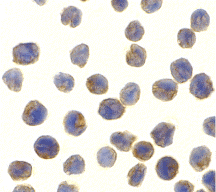
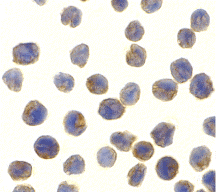
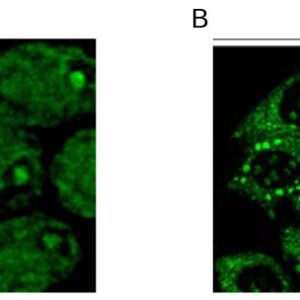
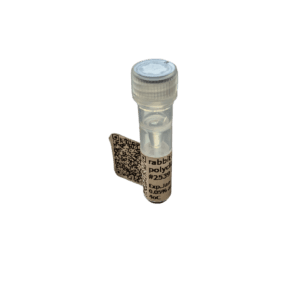
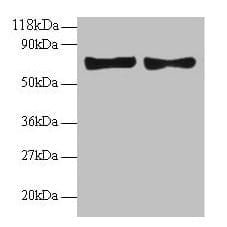
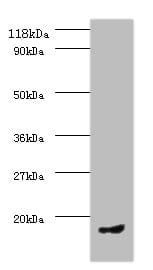

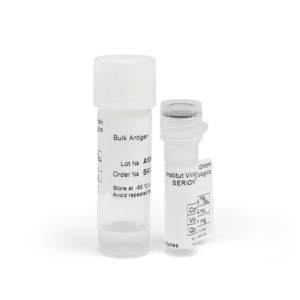
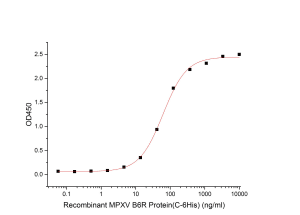
Reviews
There are no reviews yet.